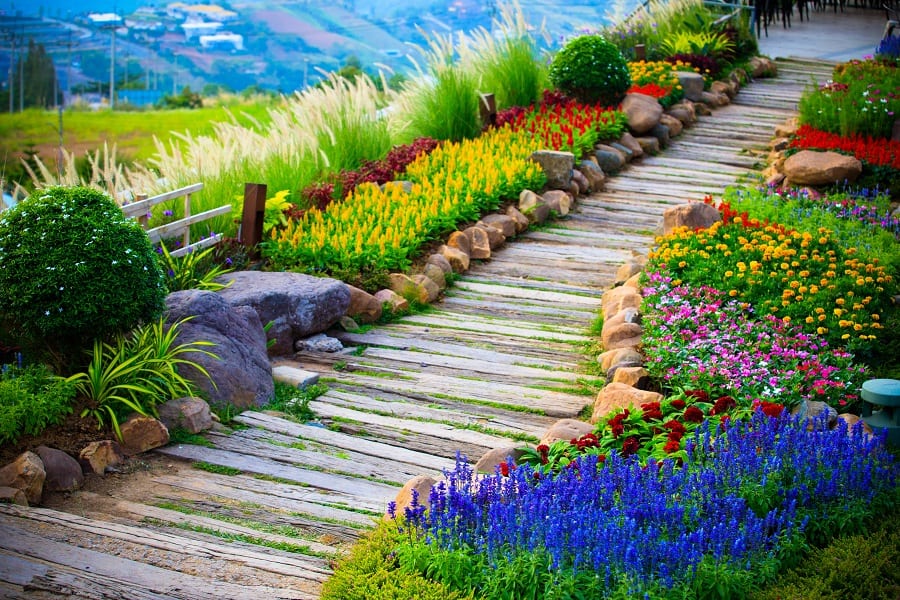
Ideas for Creating the Perfect Walkway in Your Yard
A well-crafted pathway is perhaps the first introduction to your home, guiding guests to your front door in a style that hints at what’s to come. When designing a new pathway, your walkway ideas should flow with your home’s overall design scheme. A walkway to your front door must be welcoming and easy for your guests to navigate. The options abound, whether you are deciding on front walkway ideas or need to design the perfect garden path.
You can build many walkway ideas in a day or two without costing a fortune. Certain types of paths, such as a stone paver walkway, are easy for even beginning DIYers. If you have a concrete walkway in mind, you may still be able to do much of the work yourself—even if you haven’t worked with concrete before.
Your choice of outdoor walkway design is yet another place to honor your signature style. A beautiful front path can significantly increase your home’s curb appeal. When it’s time to sell, your small investment of time and money could reap big rewards. Enjoy this look through our favorite walkway ideas and see which ones might work best for your home or garden.
1. Exploring Creative Brick Walkway Ideas
A brick pathway adds a touch of elegance to any type of home. Brick walkway ideas can materialize in casual or formal styles. Much like investing in brick for your home’s exterior, a brick walkway adds value to your property. Brick pavers are extremely durable and low-maintenance, but they can be expensive.
You can arrange brick walkway pavers in a wide variety of eye-catching patterns. Basketweave, herringbone, or running bond patterns look elegant. They’re also easy to walk upon. Mixing two or more masonry patterns and materials can turn ordinary brick into a work of art.
Bricks come in many different colors, textures, and sizes, allowing for creative options. If you’re on a budget and have a long path to cover, you can still use brick as an accent material. Edge a mulch or gravel garden path with artfully arranged brick pavers.
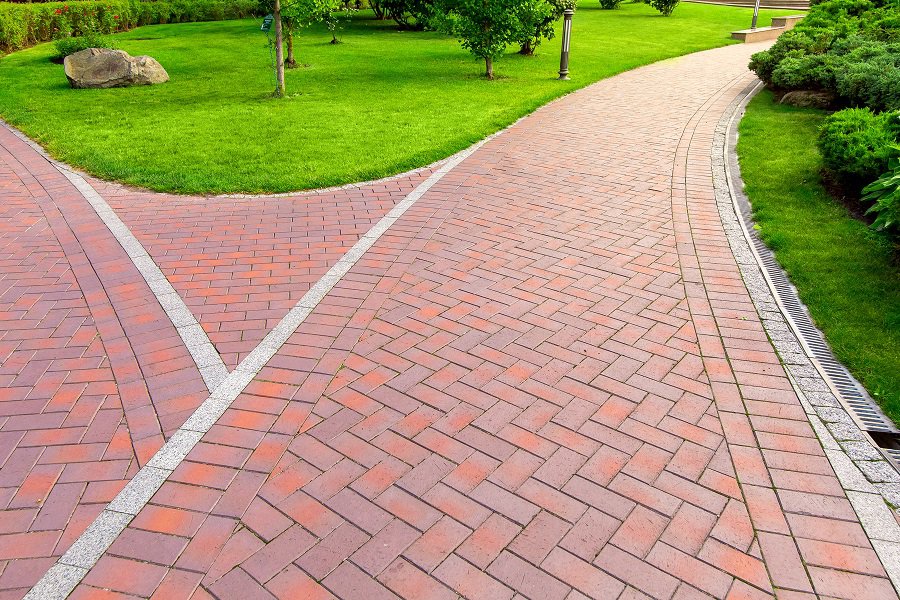
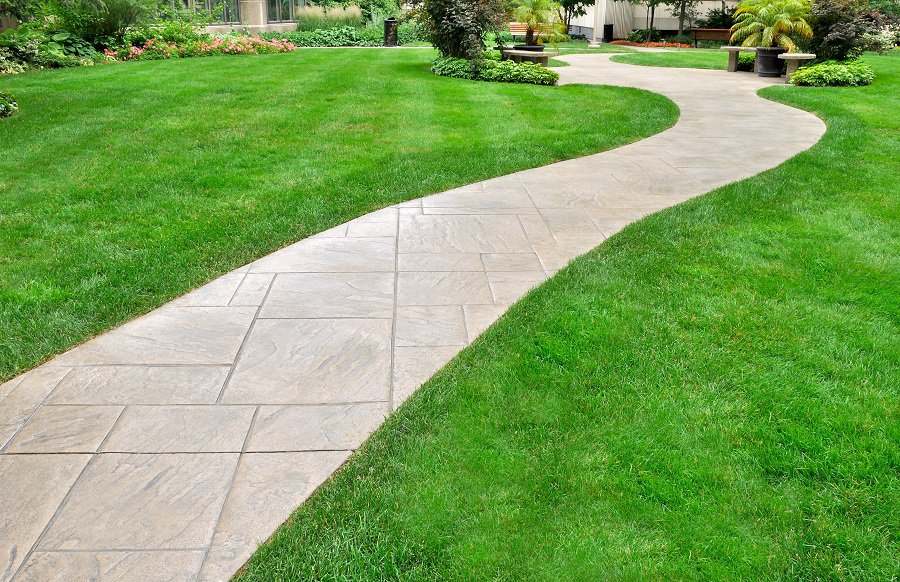
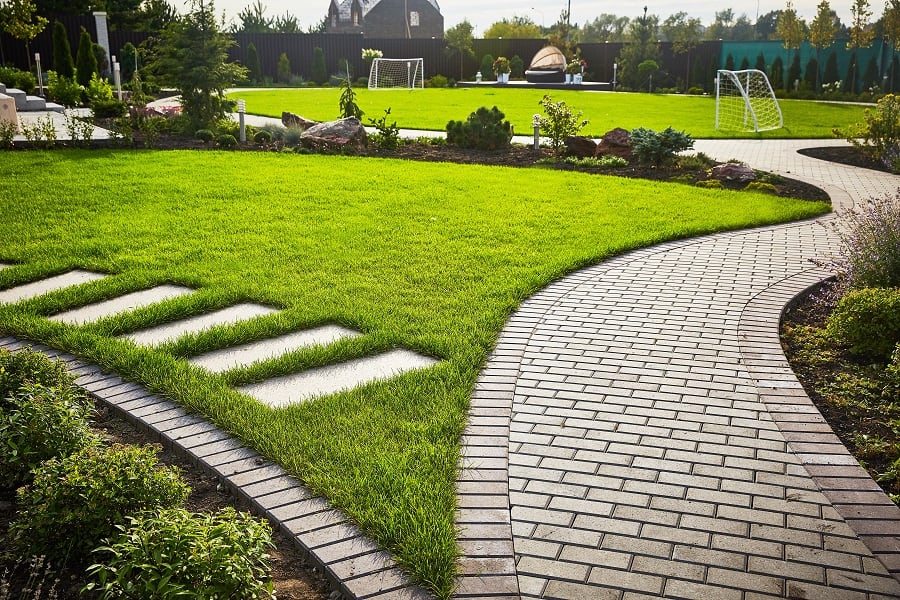
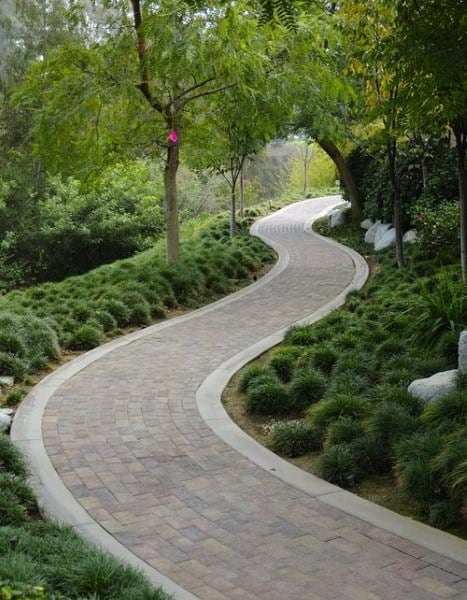
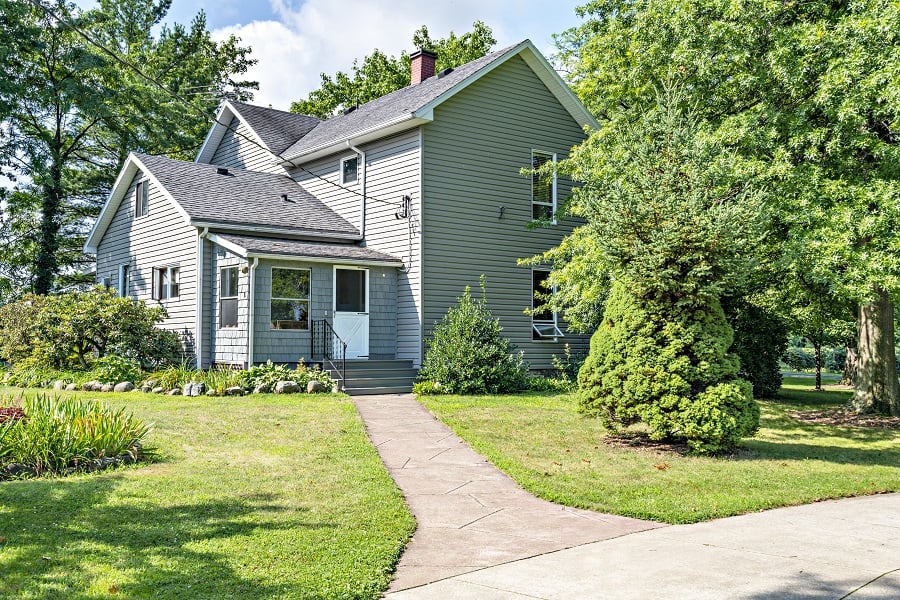
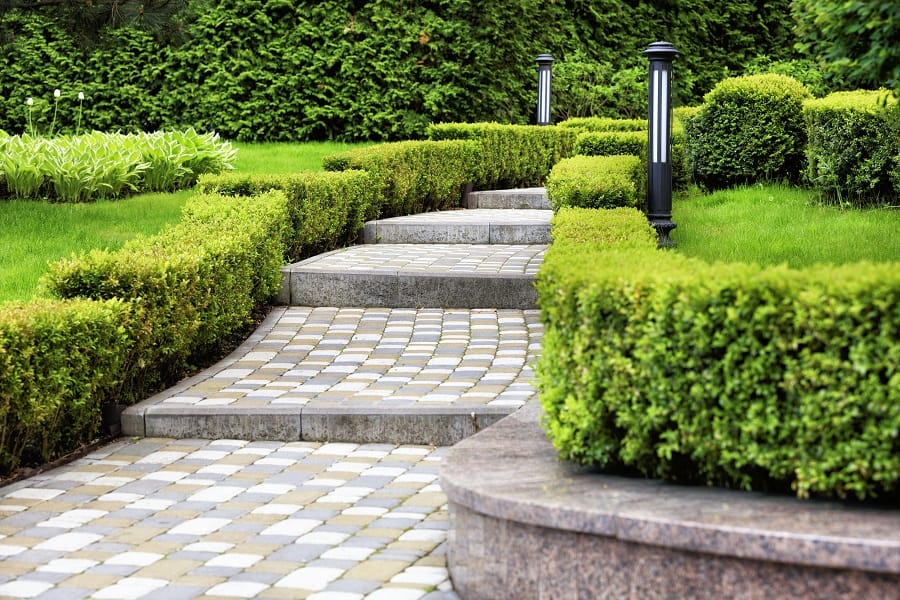
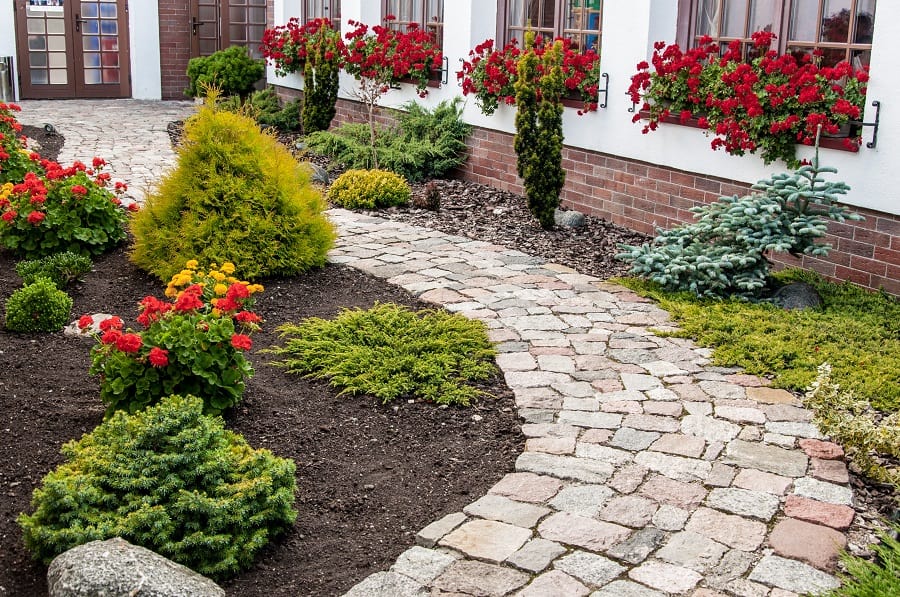
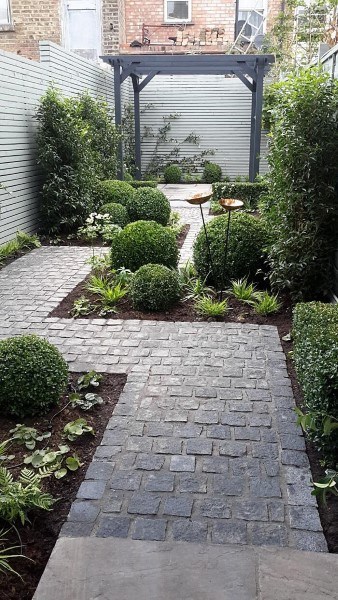
2. Embracing Gravel Pathway Inspirations
A gravel walkway adds a casual feeling to your home or garden. It is also one of the easiest and least expensive walkway ideas to DIY. In most cases, you simply remove the sod, cover the ground with landscape fabric, and spread the gravel. Some types of gravel also require edging to keep the pebbles from escaping the path boundaries.
Your choice of edging material is one way to personalize gravel walkway ideas. You can purchase thin metal or plastic edging that forms a clean line between the crushed stone and your lawn. Or, draw attention to the edges of your path by bordering the gravel with bricks or cobblestones. Edging material must contain smooth gravel, such as pea stone.
Create a beautiful walkway by combining concrete pavers and pea gravel or crushed gravel. Use gravel to fill the spaces around recycled wood, such as railway ties or pallet boards. It’s best to have your quarry or home improvement center deliver gravel and pavers, especially for long paths.
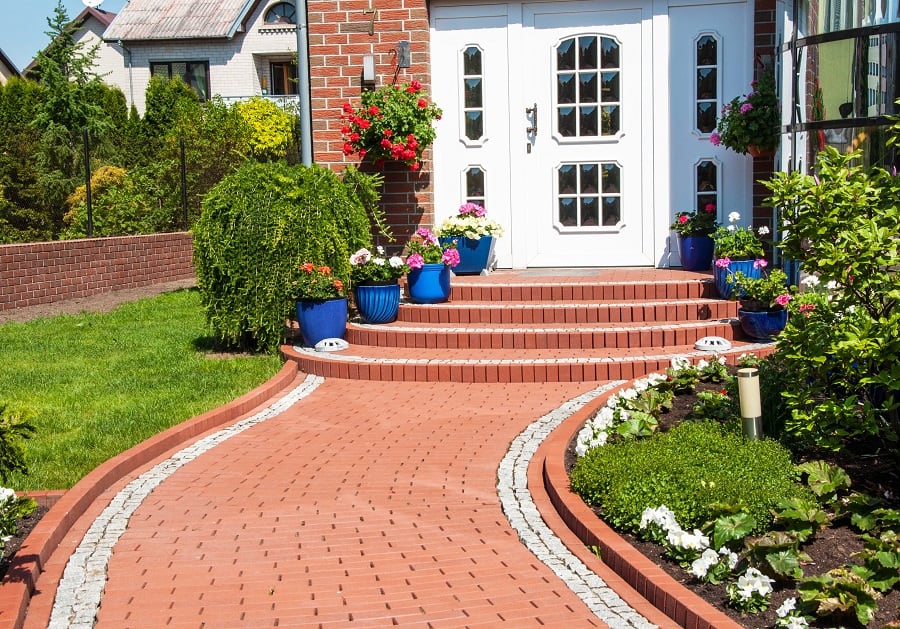
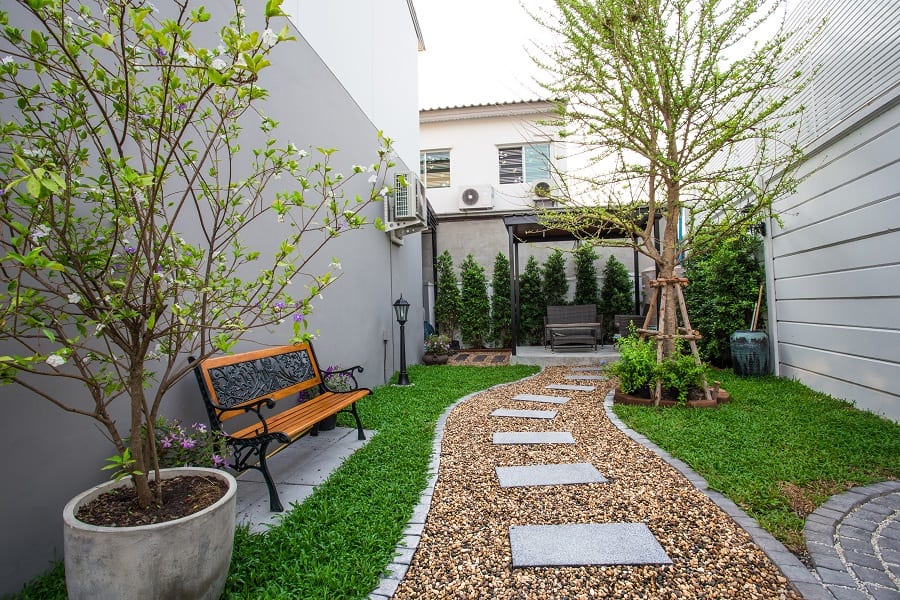
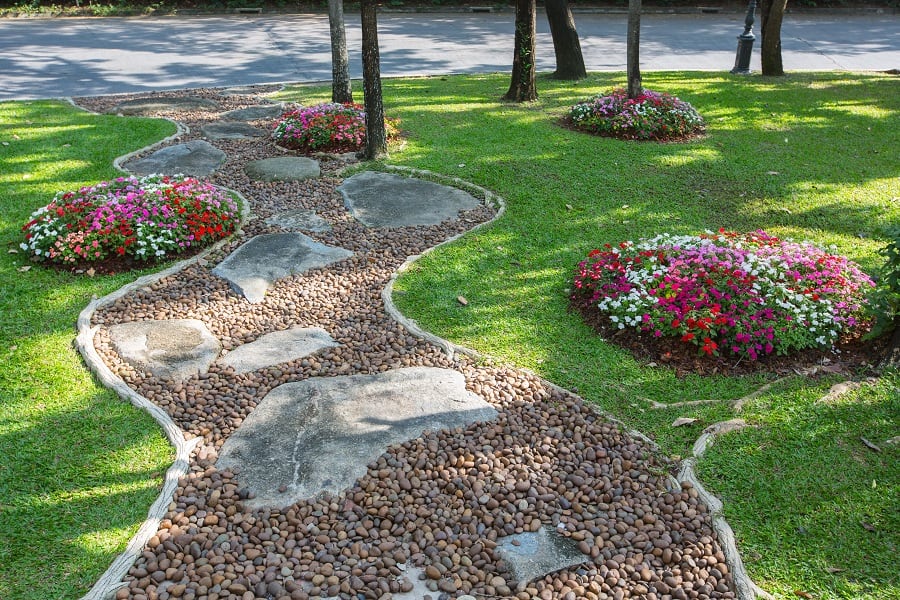
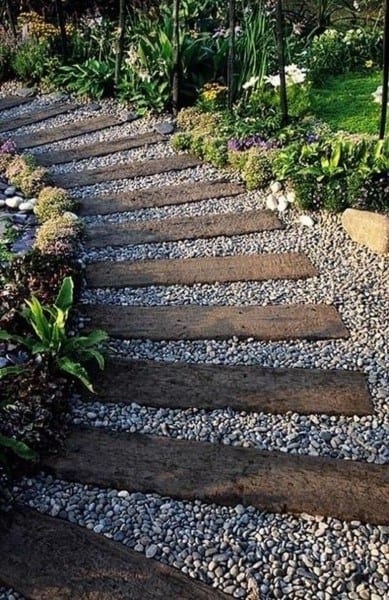
3. Natural Stone Elegance
Natural stone is one of the most beautiful materials available for creating an impressive walkway. Flagstone walkways lead the way to elegant homes around the world. You can cut flagstones into squares and rectangles. You can also leave it in irregular, organic shapes. You can purchase these in a surprising variety of colors.
Whatever their shape, stones can be fit tightly together, like puzzle pieces, for a smooth walking surface. Other stone walkway ideas call for gaps between each stone, with gravel or ground cover filling the spaces. These stepping stone paths are a popular DIY garden path option because of their organic beauty. Gravel or mulch can also cut the cost of creating a natural stone path.
Mosaic stone pathway ideas are some of the most intricate—and expensive—options for creating a walkway. They are, perhaps, the most beautiful of all options. It can be difficult to find a professional mosaic artist in some locations, and paying an artisan for his or her craft isn’t cheap. But you will end up with a real work of art that elevates the concept of a stone path to a whole new level.
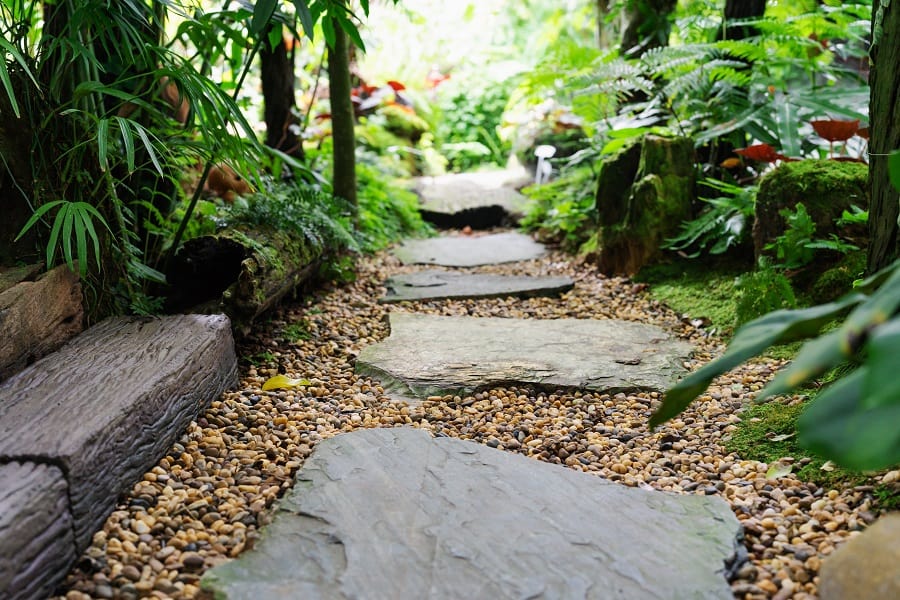
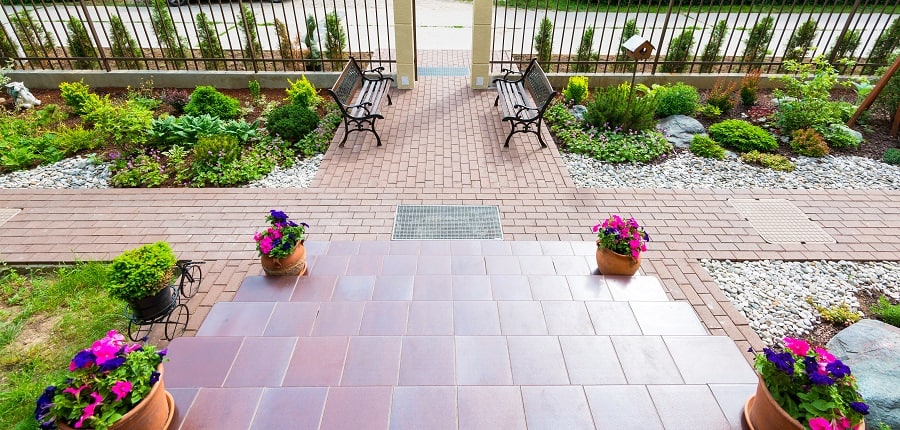
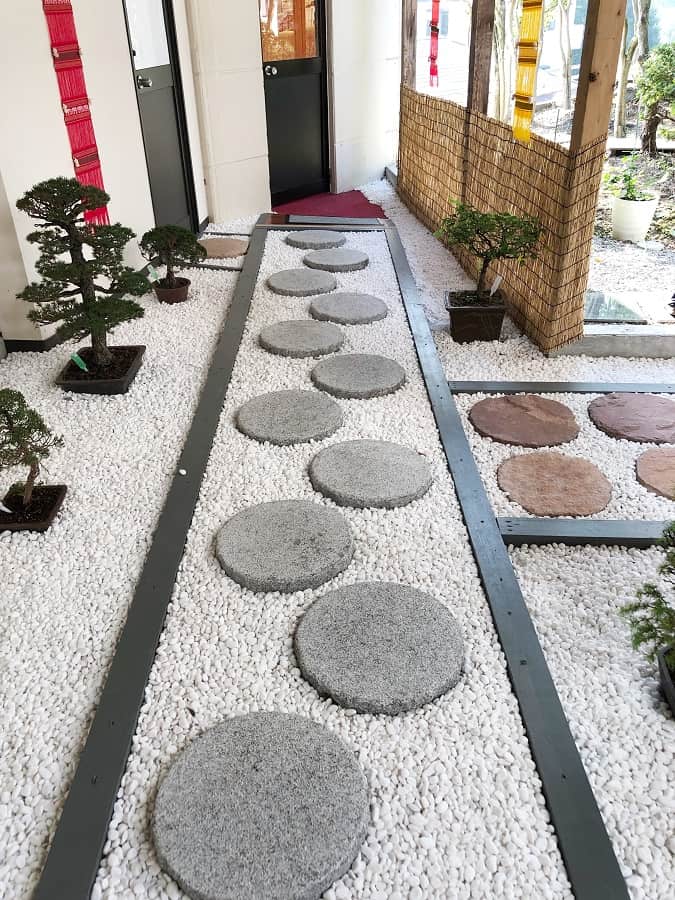
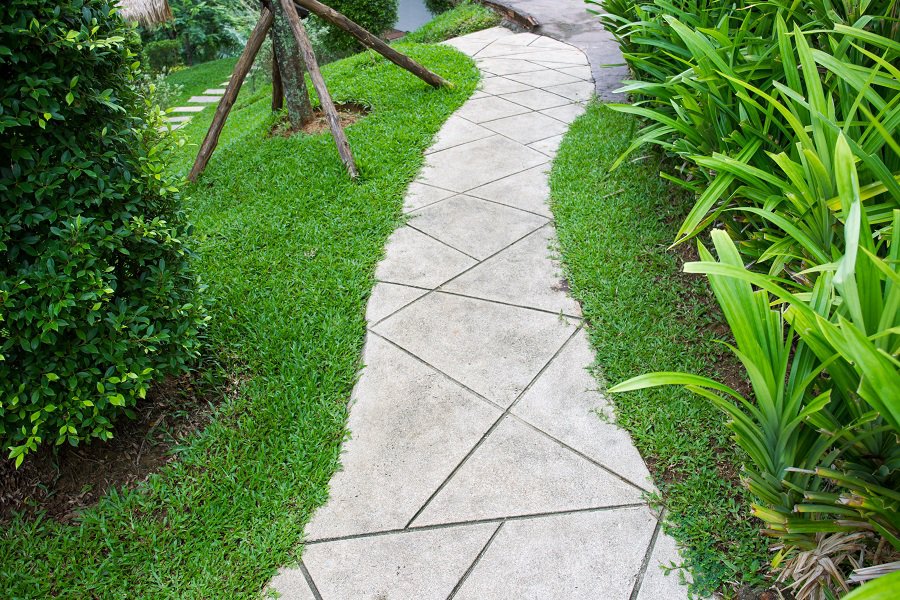
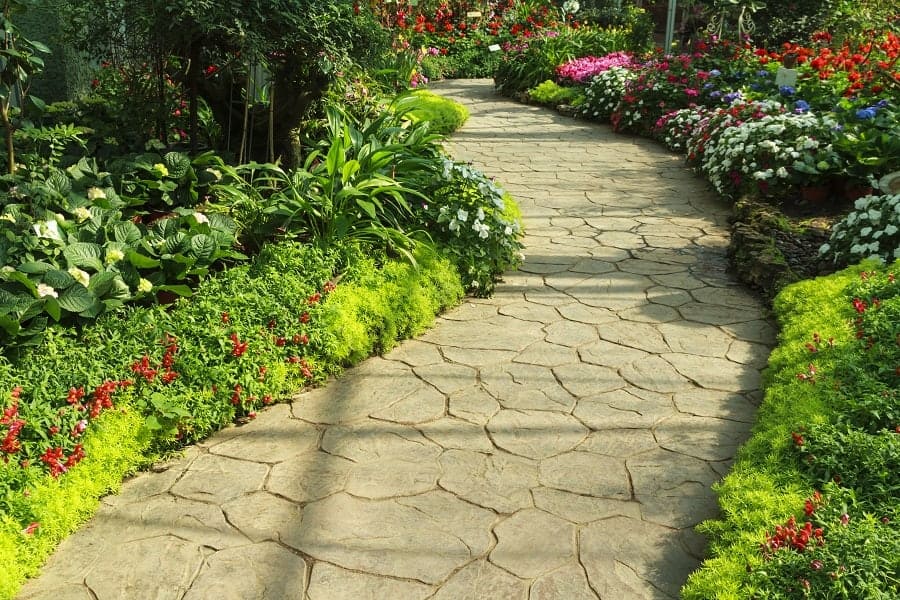
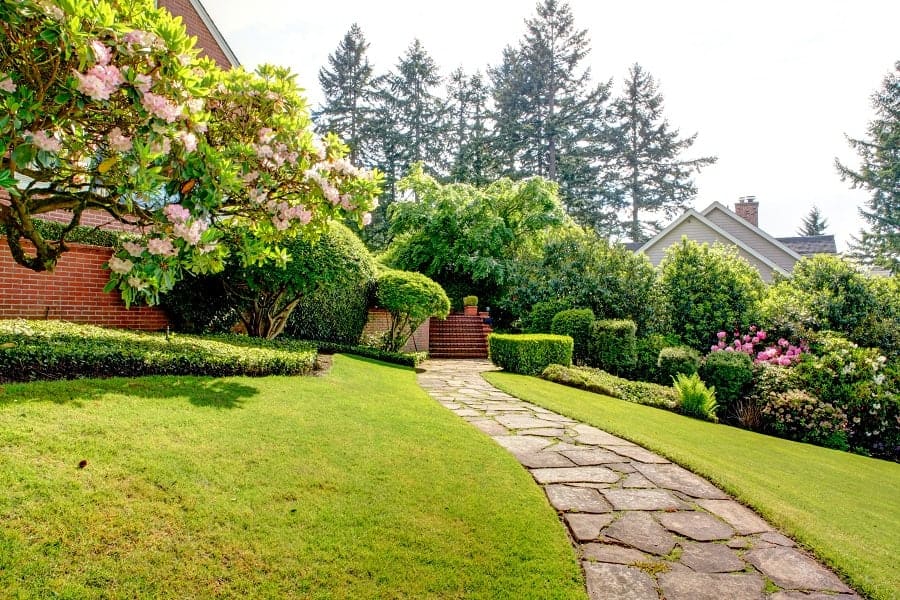
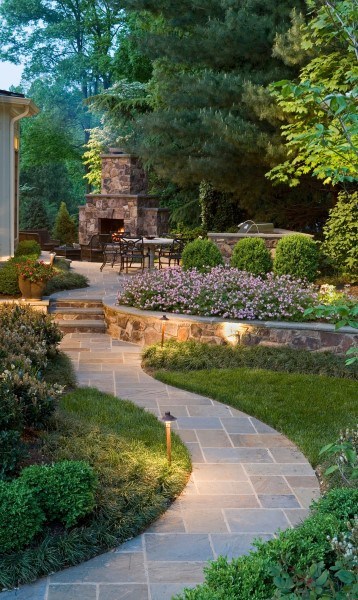
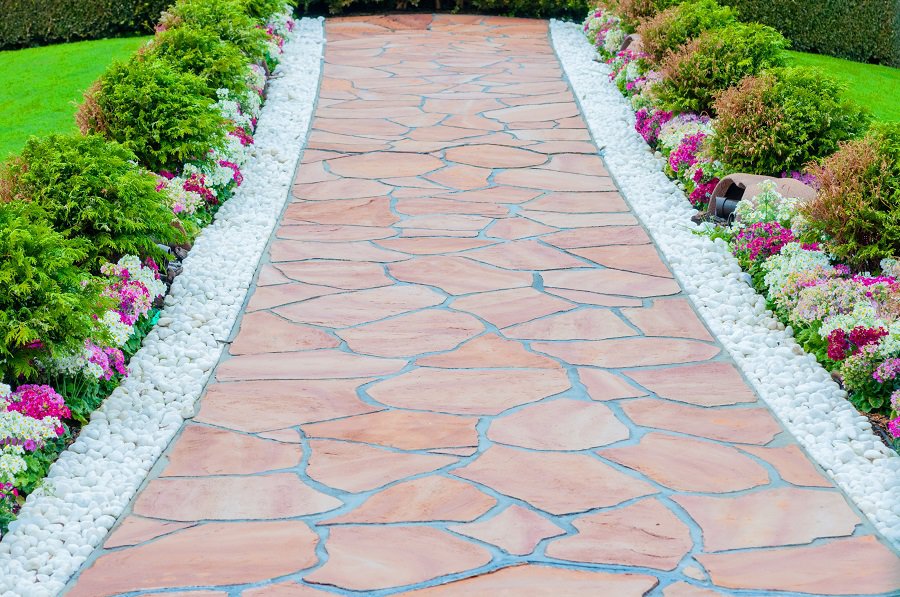
4. Graceful Curve Concepts
While a straight pathway might be the best walkway idea for your home, a curved walkway is infinitely more interesting. In some ways, curved walkway ideas may be easier to execute because of their organic edges. However, to successfully lay a curved concrete or brick walkway, you must possess expert DIY skills. This is particularly true if your path leads up or downhill.
If your walkway ideas call for a curved path, you may have more freedom to use a variety of textures, colors, and materials. Because of the freeform design, you can combine materials in creative ways.
Feel free to combine wood planks with a pea gravel surround, accented with larger river rocks. This creates a path that seems to meander naturally through your landscape.
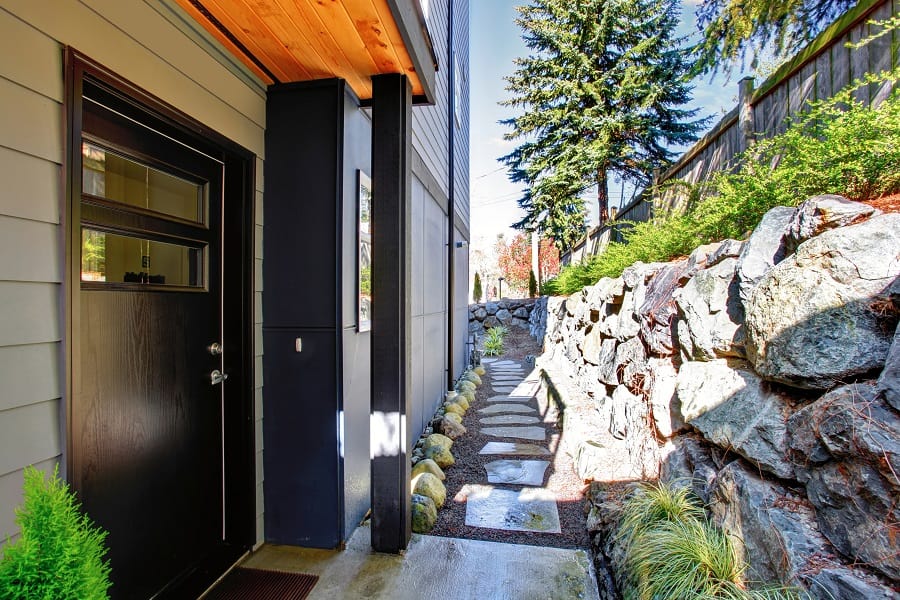
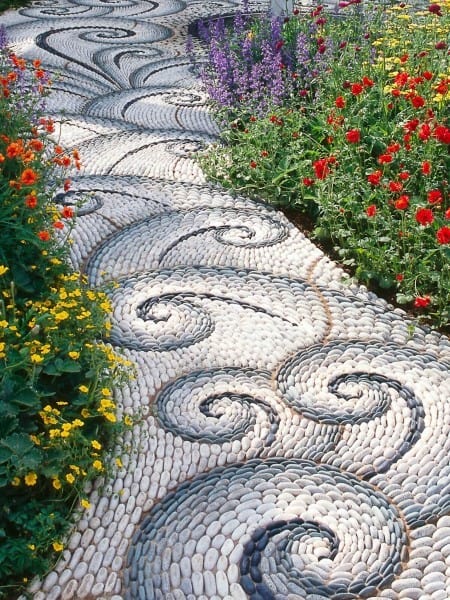

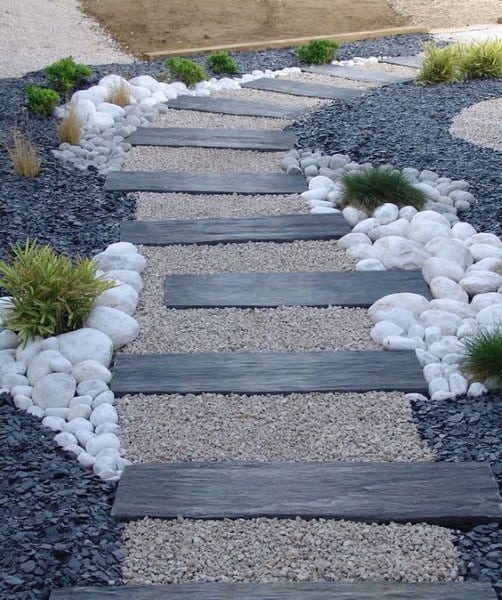
5. Paver Pathway Possibilities
A paver walkway is perhaps the easiest way to mark where feet should walk. Premade concrete pavers are available at your local home improvement center. They come in nearly every natural shade and geometric shape imaginable. Concrete pavers generally range in size from around 10 inches to several feet wide.
You can also choose a paver made from natural stone. Granite, slate, limestone, quartzite, and travertine are some of the natural stone pavers available today. While they are more expensive than concrete pavers, they lend an elegance that concrete simply cannot duplicate.
Pavers stand well on their own, laid in a row or side by side. Or, your paver walkway may consist of individual pavers surrounded by pea gravel or mulch. Another option is to place the pavers directly in the yard so that grass surrounds each. If you choose this look, make sure you set the stones low enough to clear your lawnmower blades.
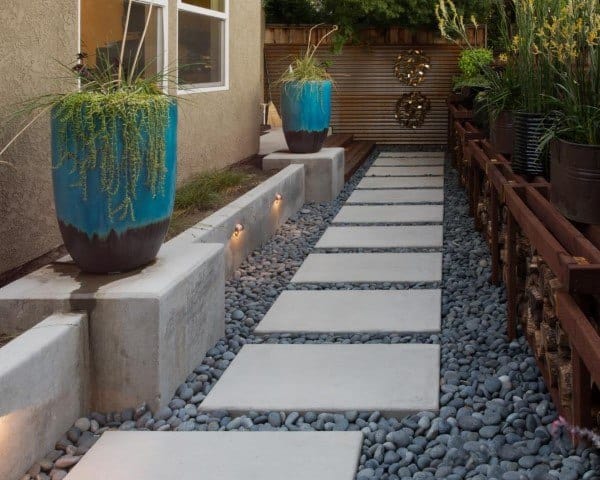
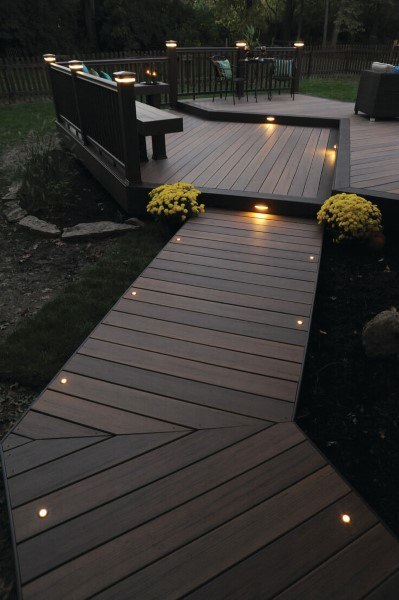
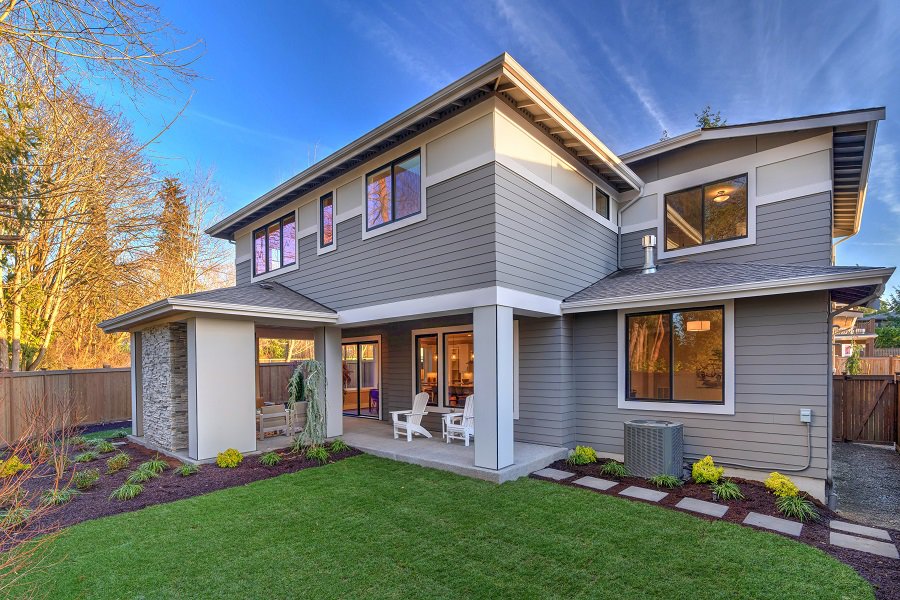
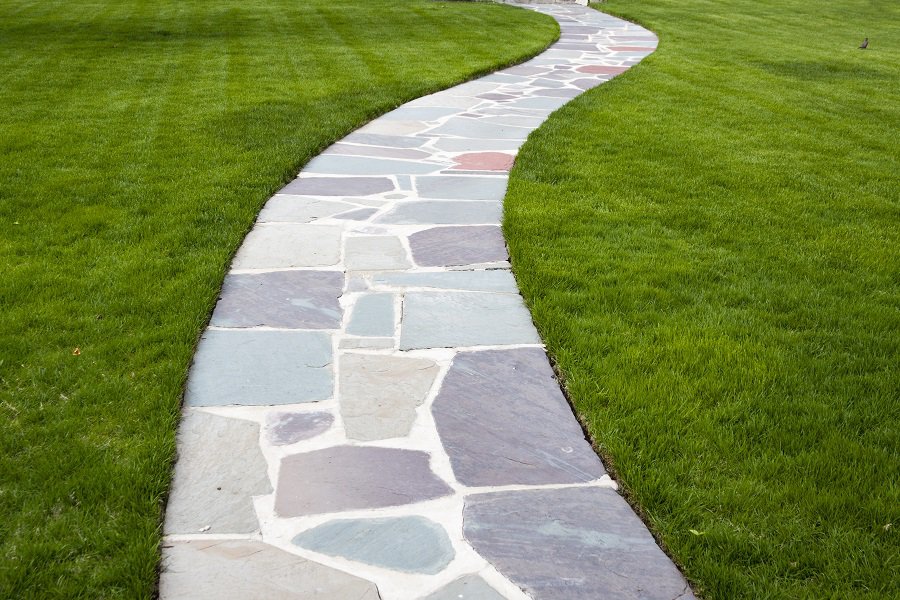

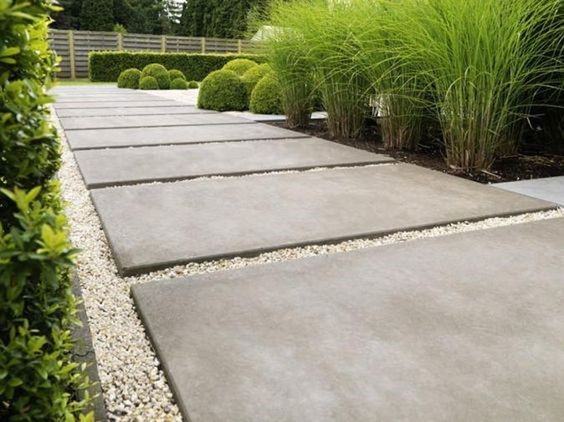
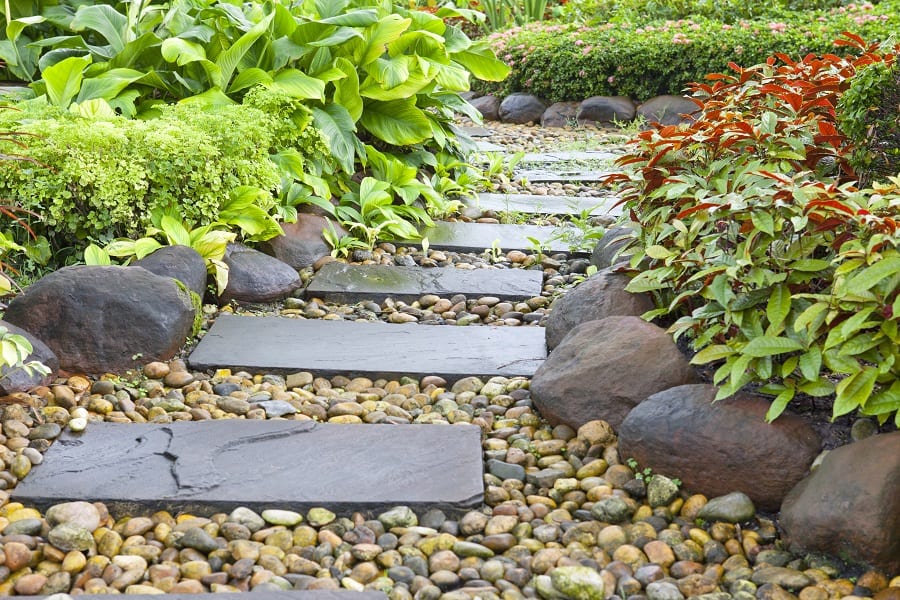
6. Unveiling Concrete Walkway Innovations
One of the most widely used walkway ideas is the basic concrete sidewalk. These walkways can curve, run straight, widen, or narrow. If you’re building a concrete patio, add a concrete walkway while the cement truck is there. You can jazz up the look of a plain concrete path by edging it with a brick or natural stone border.
If you lack the experience to DIY a smooth concrete surface, look into reusable cement molds. These forms usually hold one bag of quick-mix concrete, making it easy to do this project yourself. Some molds give the appearance of randomly placed individual stones. You can tint the concrete to accentuate your home’s exterior.
Stamped concrete is an option best done by someone with experience in concrete work. The plant applies texture, and then a form stamps down to make lines resembling natural stone masonry. You can use a trowel to bevel each section’s edges for a more realistic stone appearance.
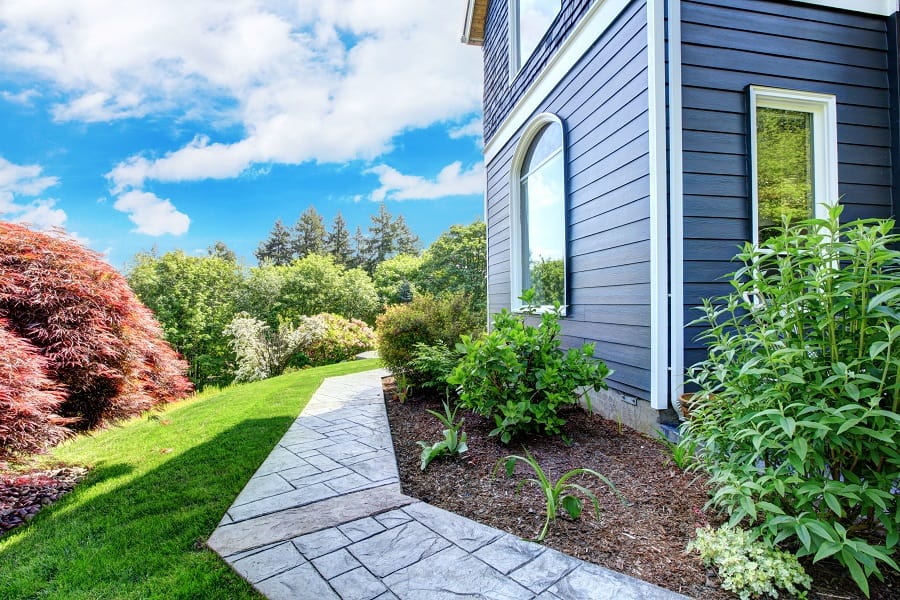
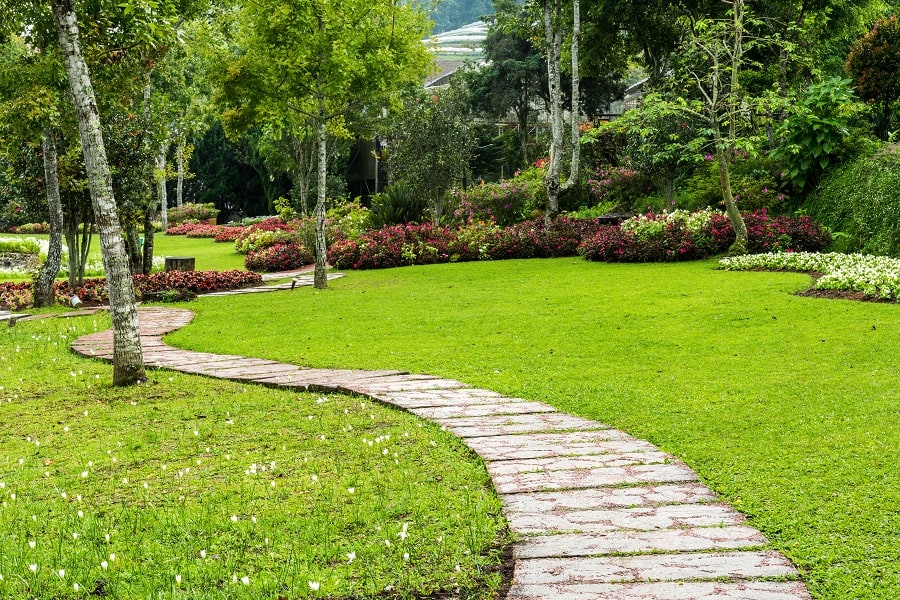
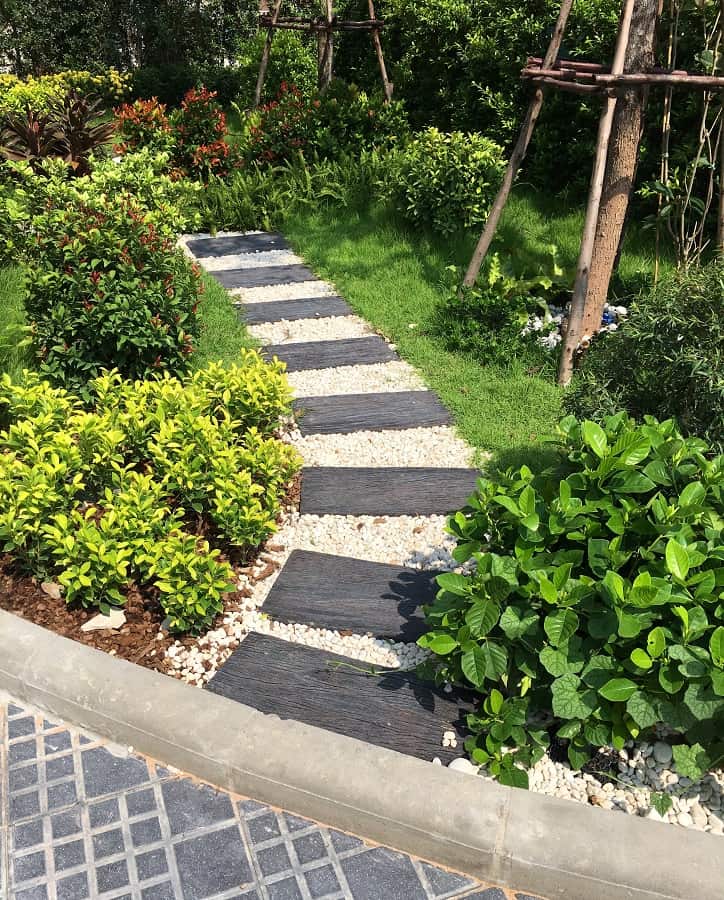
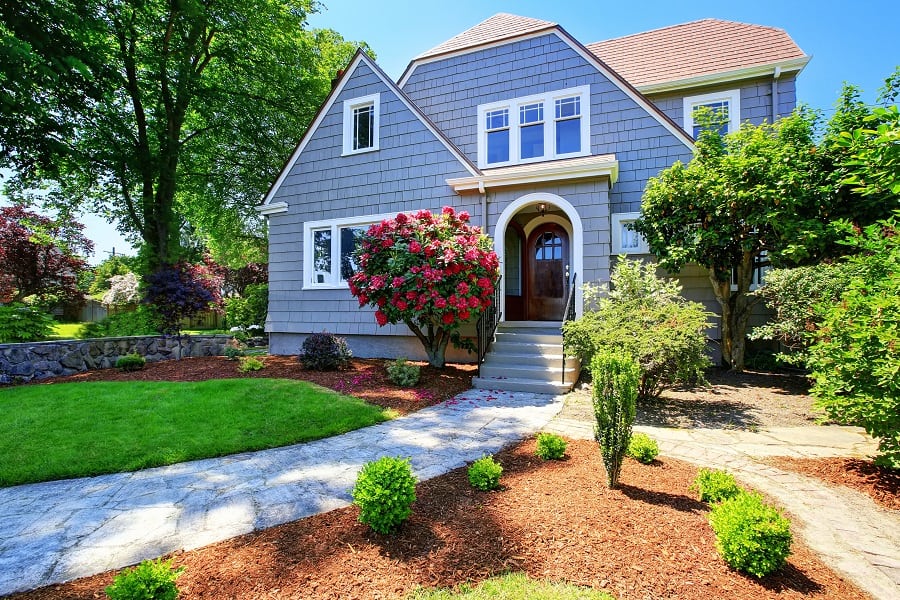
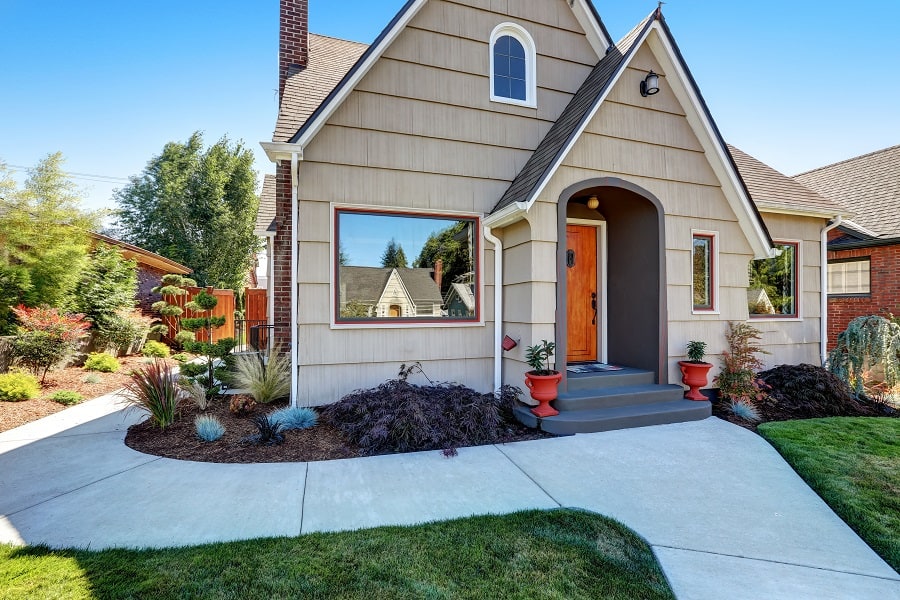
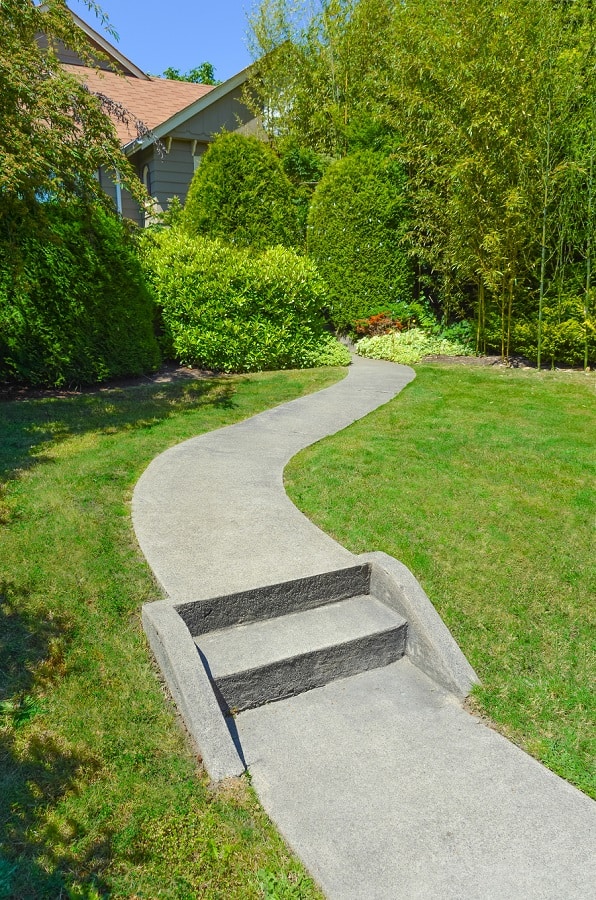
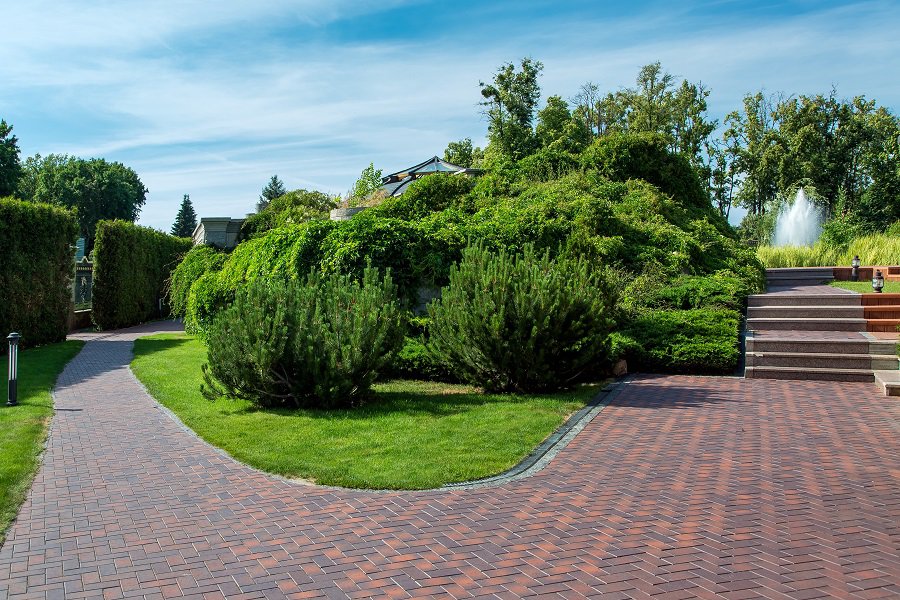
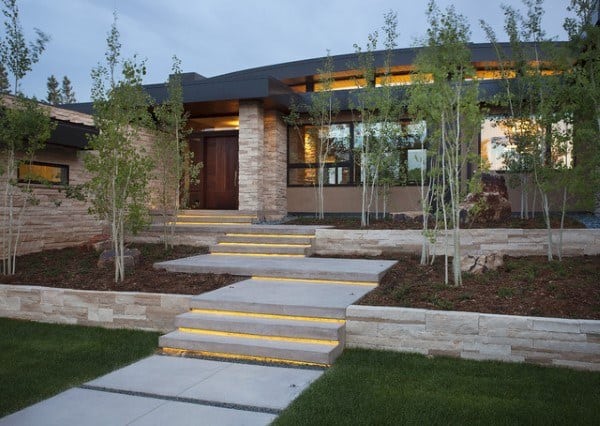
7. Simplicity in Walkway Designs
You can craft simple walkway ideas from any type of pathway material. Place concrete, natural stone, gravel, and wood in simple configurations. For a simple modern path, lay two sizes of circular concrete pavers between your driveway and your front door. For a more structured look, place a row of square or rectangular slate pavers in a straight line.
A simple walkway design is necessary if you want your landscaping or other elements of your outdoor space to stand out. To keep your walkway in the background, use natural colors and a simple configuration. Avoid combining several walkway materials or adding unnecessary embellishments to your pathway.
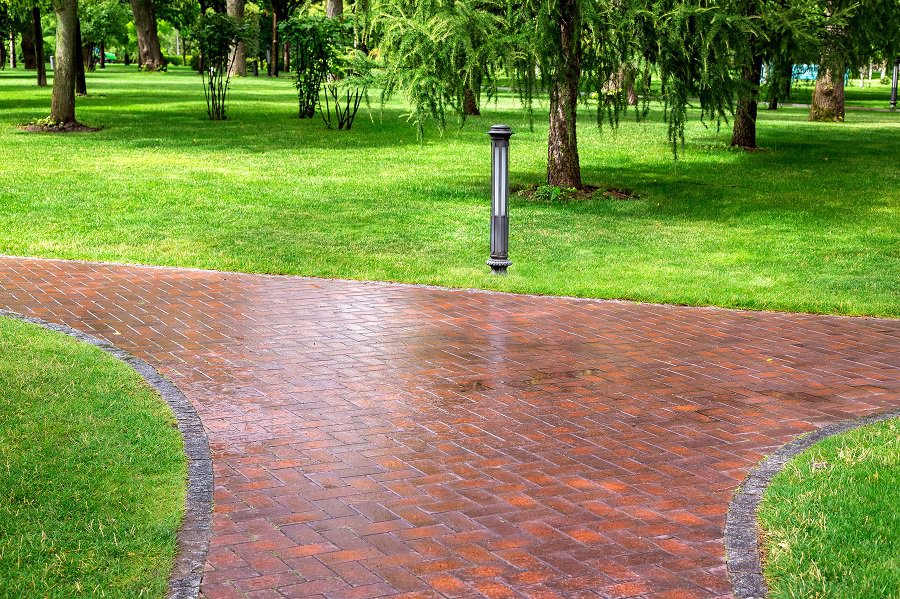
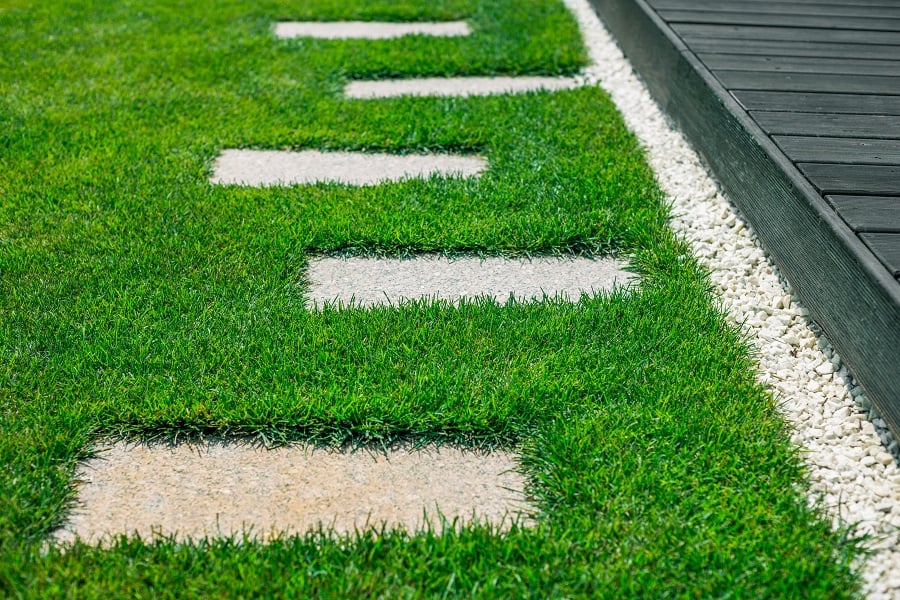
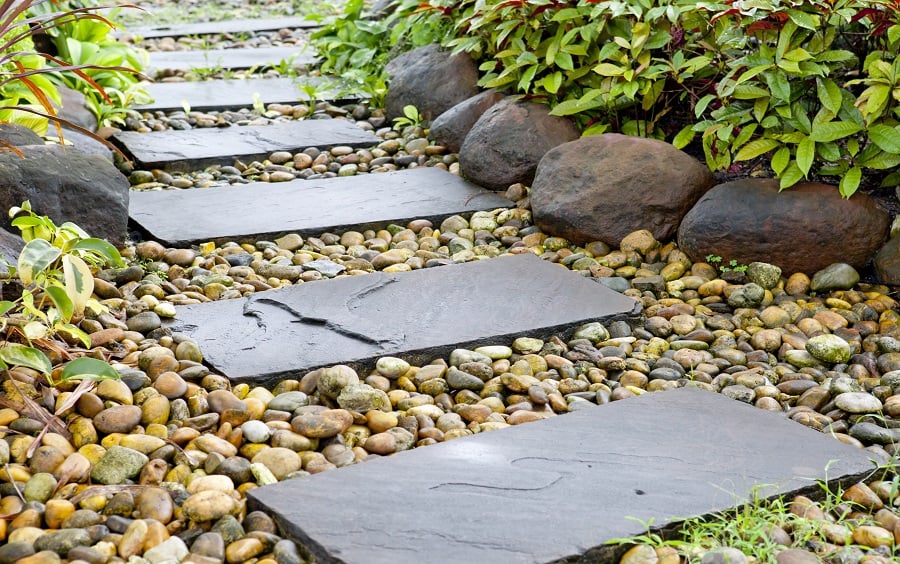
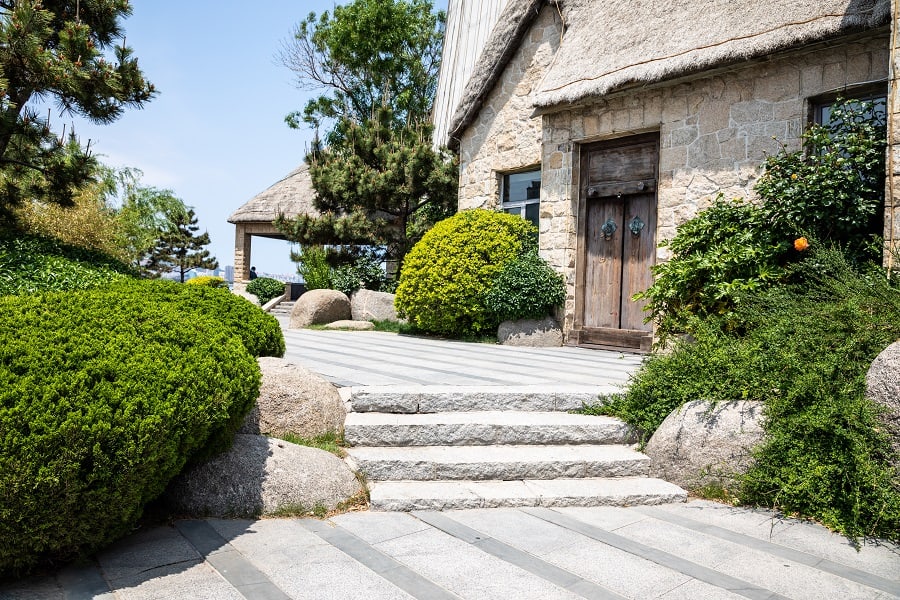
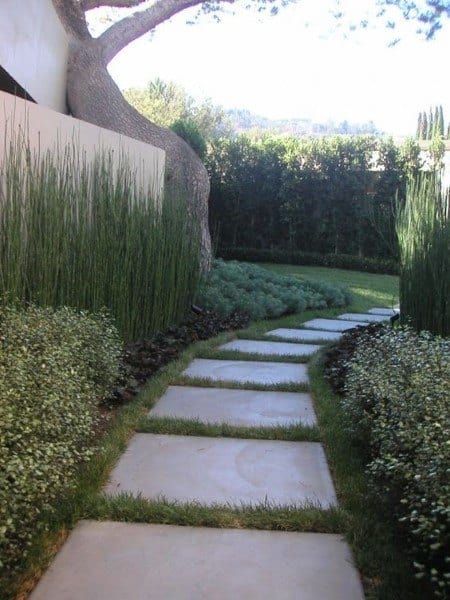
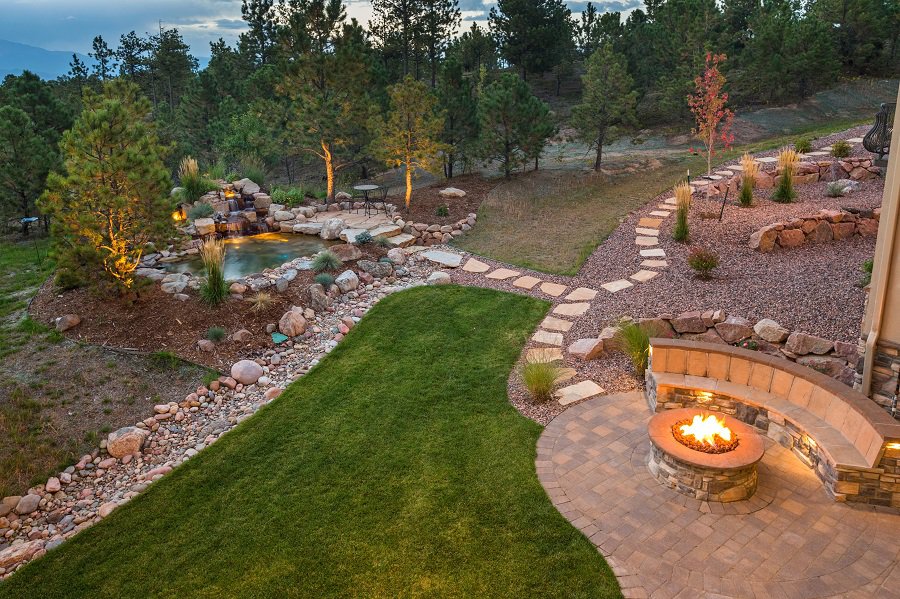
8. Inviting Wood Walkways
While wood is generally less durable than other walkway ideas, its natural colors and textures can make it a good choice. The wood’s rustic beauty is charming, leading to a beachy cottage, Craftsman home, or rustic cabin. Wood is also a lovely way to enliven a garden path, with its warm neutrality contrasting against brilliant green foliage.
Use standard wood decking to make a simple wood walkway leading to your front door. You can also use a composite product that will last longer than natural wood while providing a similar look. You don’t need to complicate a great backyard garden path. Lay wooden discs sliced from large pine or oak-like stepping stones through your yard.
If you are into green construction, look into recycled wood planks. You can also upcycle old wooden pallets or fencing planks into a custom DIY garden path. These types of wood coordinate well, filled with multicolored river rock gravel. It creates an earthy and rustic design statement.
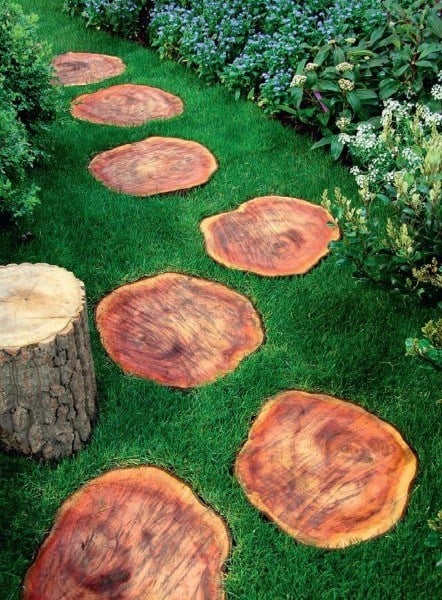
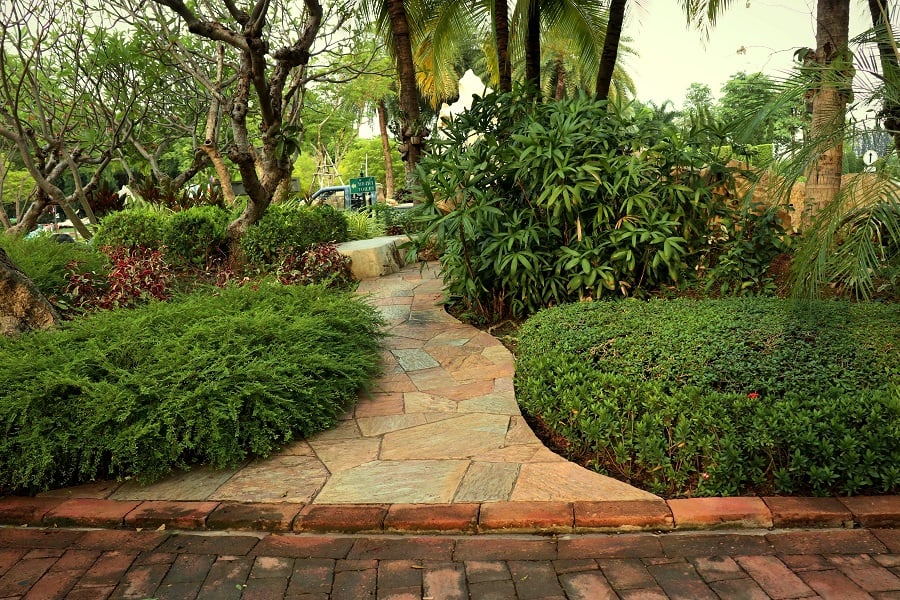
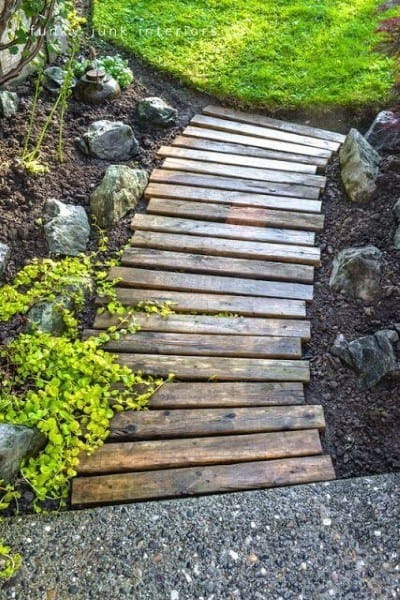
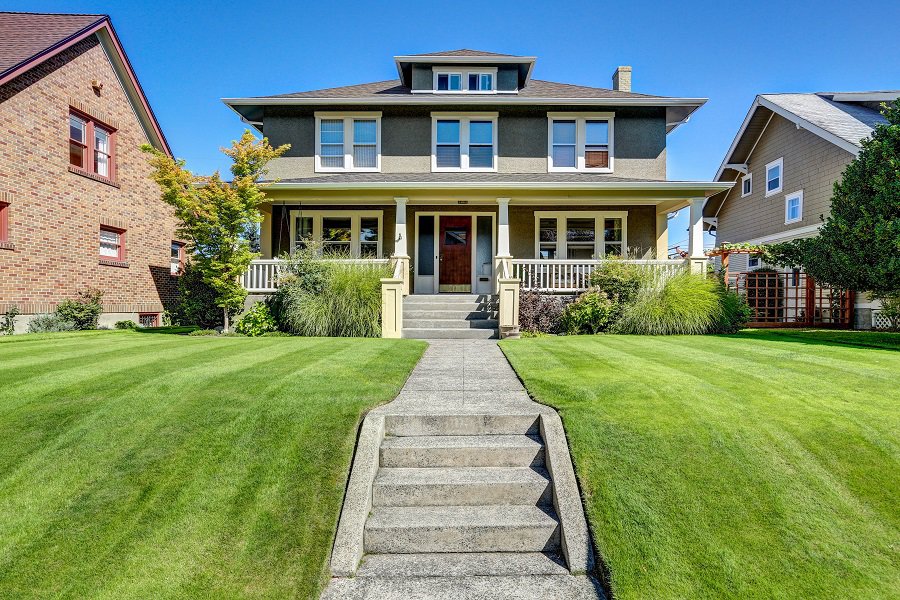
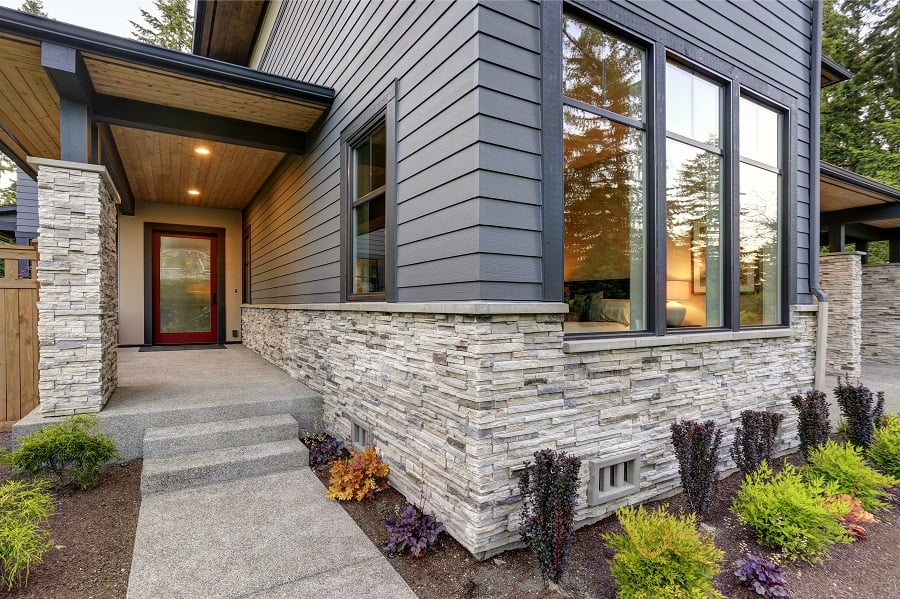
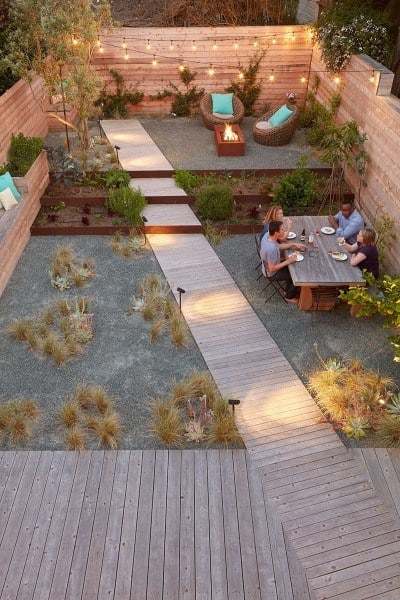

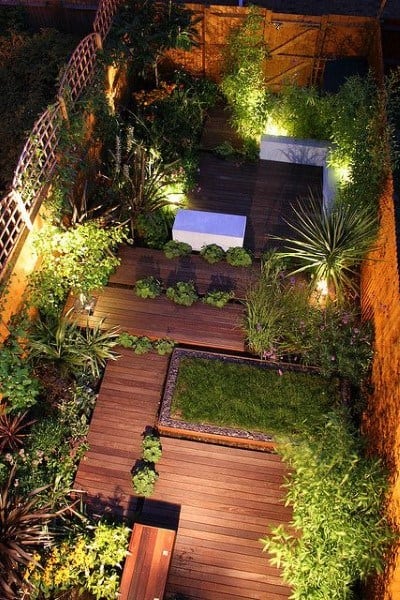
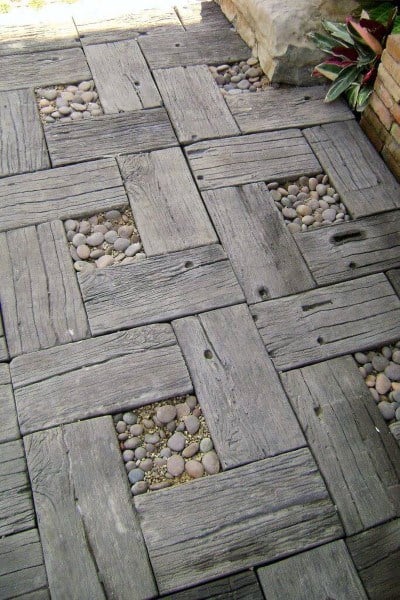
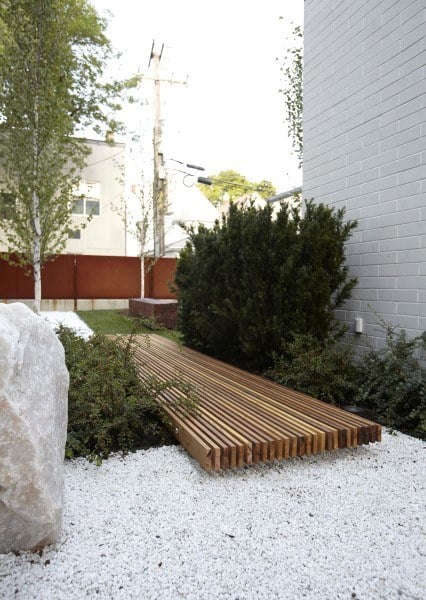
9. Crafting DIY Garden Footways
A great garden path idea should fit your budget, decor, and DIY skill set. Even if you don’t consider yourself a DIY expert, many of the garden path ideas shared here are good for expanding your skills. Just about anyone can lay a simple concrete paver walkway, or prepare a gravel path. In the backyard, you can practice without worrying about a perfect result.
Even if you decide to hire a mason to lay a brick or concrete path, there are still ways you can get involved in the work. You can clear the sod yourself, then finish the landscaping after the walkway’s completion. Talk to your mason or contractor and ask if there are other tasks you can do to minimize his or her time on the job.
If you want to DIY from scratch, make sure you thoroughly research the best types of materials for your climate. Then decide how formal or casual you want your path to be. This video presents options for DIY walkways and explains what’s involved with path preparation.
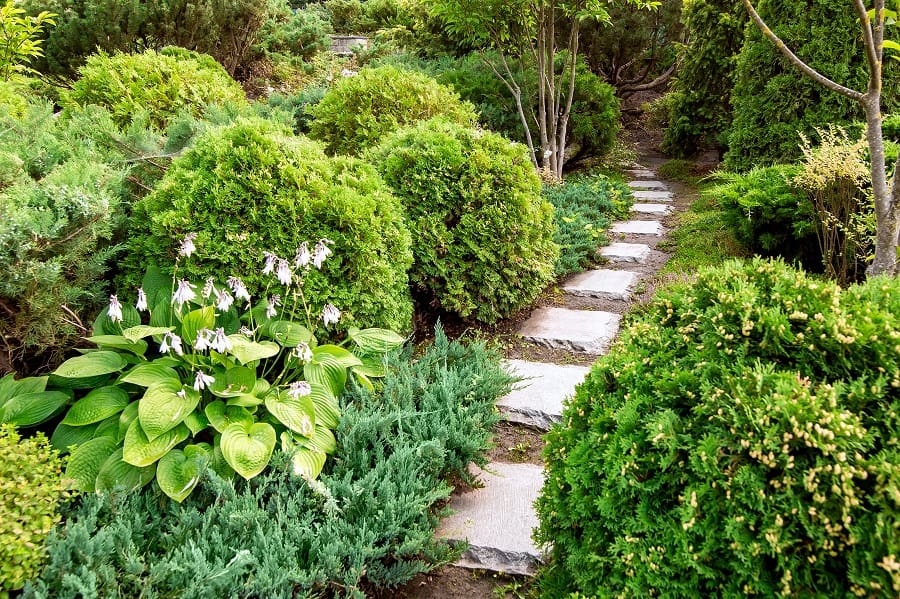

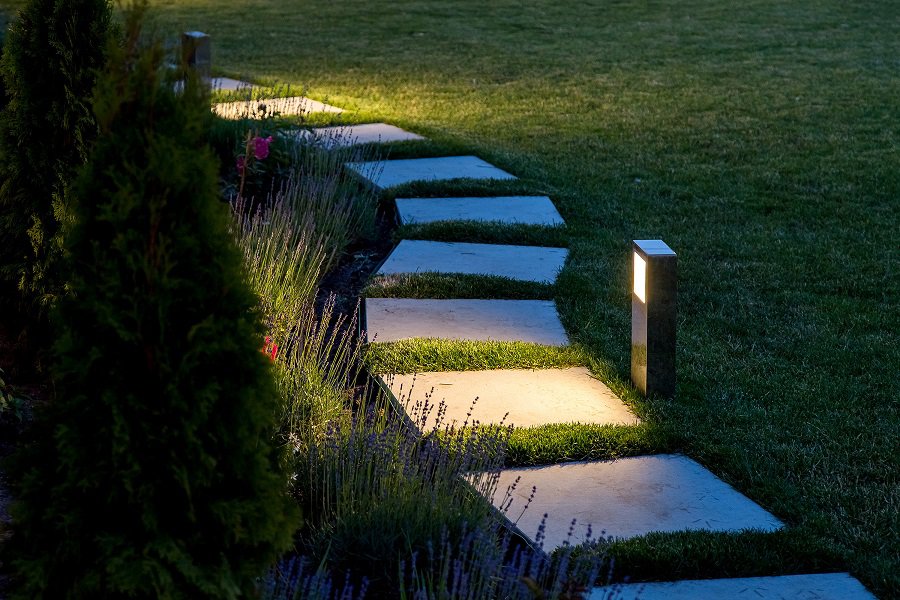
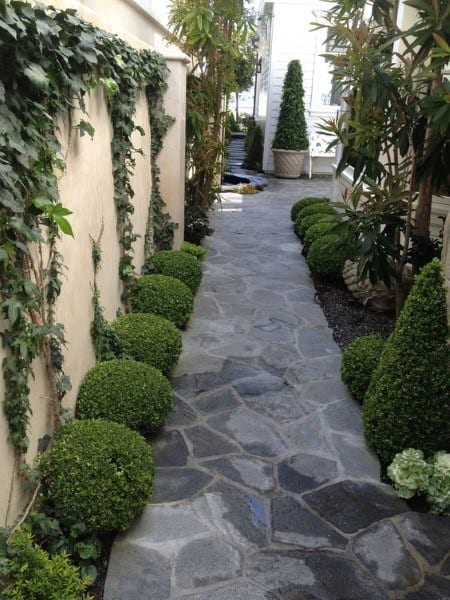
10. Walkway Landscaping Ideas
No walkway idea is complete without landscaping to accent its borders. A front yard or garden path can be its own work of art trailing through a simple grass lawn. However, most walkway ideas look best when embellished with plants that complement the decor.
Decorative or flowering grasses make beautiful borders, set in clusters along the way. If you already have mature trees and shrubs that you want to keep, weave your walkway around them. Be mindful that tree roots can eventually crack concrete. This can wreck your carefully crafted path. If you’re landscaping from scratch, avoid planting trees too close to your walkway.
Flowers are always a welcoming touch along a path that leads to your door. Plant lilies and other bulbs that will return year after year. If you live in an arid climate, plant an assortment of cacti at strategic corners and curves. Use black mulch or white marble stones for extra contrast beneath colorful flowering plants.
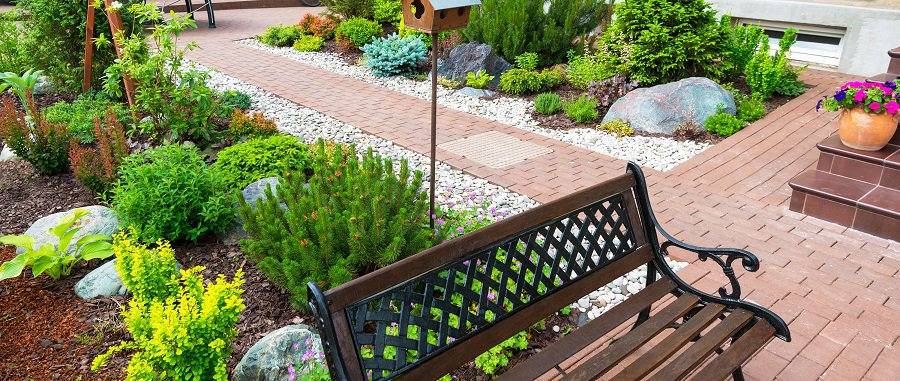
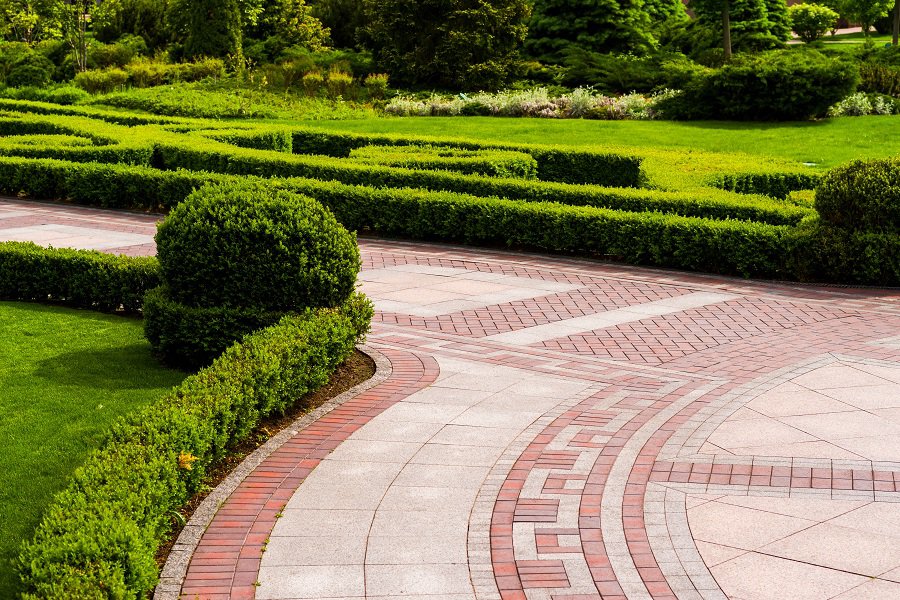
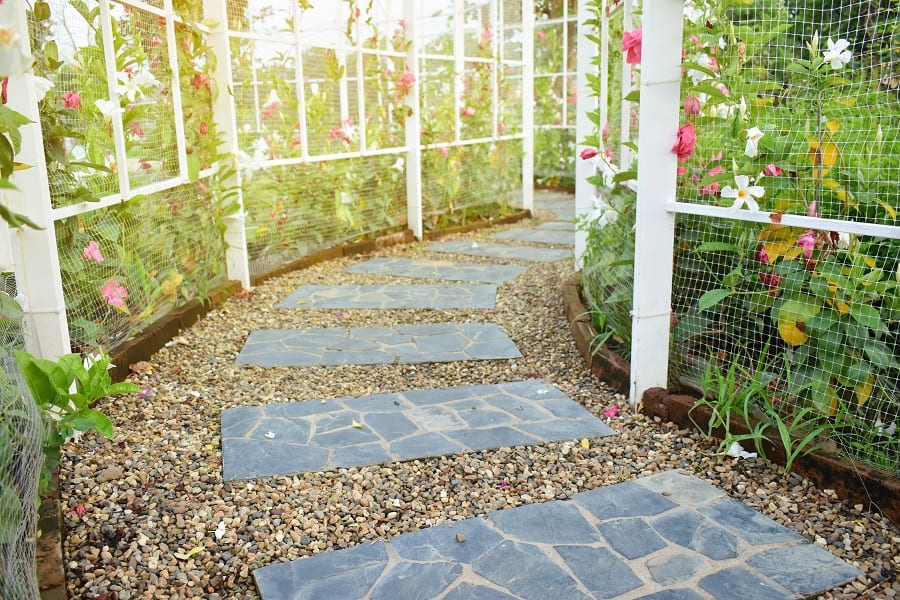
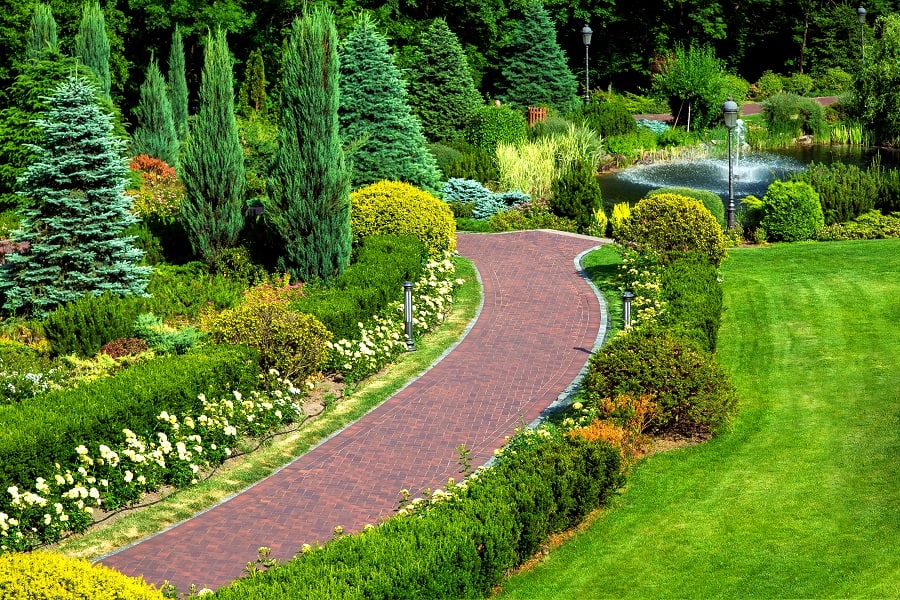
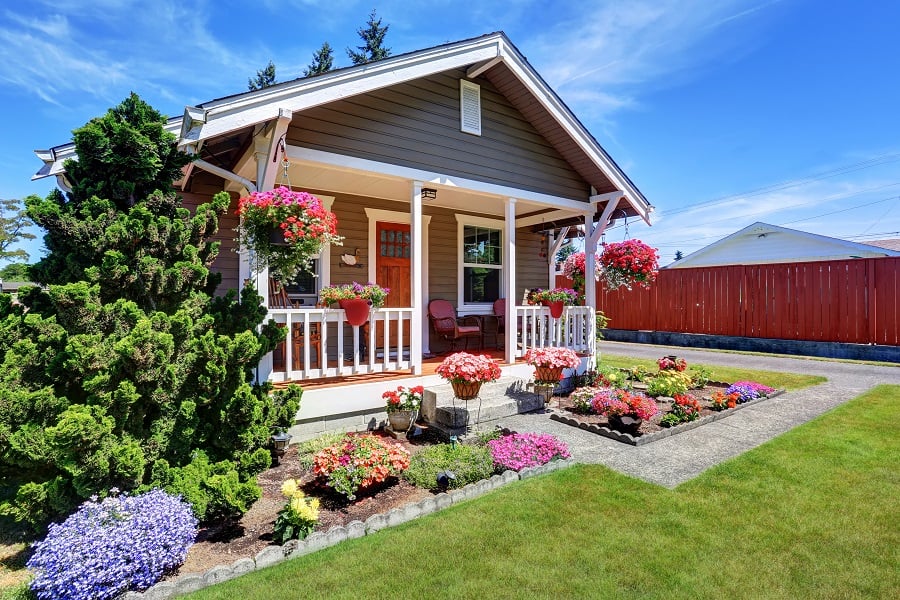
FAQs
What are some unique materials for creating walkways?
Walkways can be crafted from a variety of distinctive materials to add character to your landscape. Consider using recycled glass to create a colorful and eco-friendly path, or opt for rubber pavers that offer excellent grip and durability. For a rustic touch, reclaimed wood planks can create a warm and inviting atmosphere. Additionally, permeable materials like gravel and decomposed granite can contribute to water drainage and sustainability.
What are some creative ways to incorporate lighting into walkways?
Lighting can enhance both the safety and aesthetic appeal of walkways. Try embedding LED strip lights along the sides of the pathway for subtle illumination. Solar-powered pathway lights provide energy-efficient options, requiring no electrical wiring. For a magical touch, incorporate uplighting by placing fixtures beneath trees or plants to cast enchanting shadows. To highlight specific features, such as sculptures or flower beds, consider using spotlights or downlights strategically positioned along the walkway.
How can I combine walkway landscaping with my overall garden design?
Integrating walkway landscaping with your garden design creates a harmonious and unified outdoor space. Select materials and colors that complement your existing garden features. Use plants to soften the edges of the walkway, creating a seamless transition between the path and the surrounding flora. Consider incorporating hardscape elements such as seating areas or water features along the walkway to encourage leisurely exploration. By thoughtfully blending the walkway design with your garden’s aesthetics, you’ll achieve a captivating and cohesive landscape.



